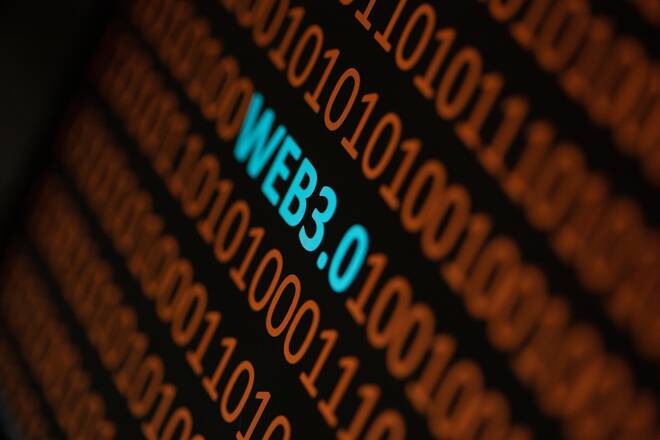Advertisement
Advertisement
The Internet is Flawed and Web3 is The Answer: a16z
By:
One of the crypto industry’s most prominent venture capital firms, Andreessen Horowitz (a16z), has released its 2022 ‘State of Crypto’ report noting that Ethereum’s popularity is a double-edged sword.
Key Insights:
- The internet is currently dominated by big tech oligopolies and digital authoritarianism.
- Web3 will enable decentralization and user ownership of data and content.
- Ethereum is the industry standard, but high demand increases network fees.
This week, Crypto venture giant Andreessen Horowitz released its latest state of the industry report, revealing the firm’s take on Web3 and the Ethereum ecosystem.
Web3 is the buzzword of 2022 and essentially refers to the evolution of the internet beyond its current state. According to a16z, the “internet as we know it is flawed” because big tech oligopolies and digital authoritarianism dominate it.
It stated that after the friendly beginnings of Web2, companies have become more “extractive and less cooperative,” presumably referring to web giants such as Google (GOOG) and Meta (formerly Facebook – FB) though it didn’t directly mention them.
Web3 is different, however, as it aligns network participants to work together toward a common goal: the growth and health of the network. Users can own a part of the internet and be in control of their own data, which is the complete opposite of the current state of things controlled by a handful of data harvesting monopolies.
Introducing a16z’s 2022 State of Crypto Report
A lot has changed since we started investing in crypto nearly a decade ago.
Here are 5 key takeaways from the a16z crypto web3 industry survey and data analysis by @darenmatsuoka, @eddylazzarin, @cdixon & @rhhackett ⬇️ pic.twitter.com/JFLXbNh03u
— a16z (@a16z) May 17, 2022
Ethereum a Double-Edged Sword
The report stated that Web3 is a multi-chain environment with Ethereum (ETH) dominating the ecosystem with 5.5 million active addresses and 1.1 million daily transactions.
It added that while there are plenty of rival blockchains such as Solana (SOL), BNB Chain (BNB), and Avalanche (AVAX), Ethereum block space demand is unmatched. Ethereum also continues to attract the most developers, keeping it ahead of the competition.
Nonetheless, the company did warn that Ethereum’s popularity is also a “double-edged sword” since it has suffered scaling issues resulting in astronomical network fees during times of peak demands. Average gas fees spiked to over $200 per transaction on May 1 following a much-hyped nonfungible token (NFT) launch. Layer-2 networks have emerged and are competing to bring those fees down, however, there is now a lot more choice than ever before.
The company determined that it is still very early days for crypto and Web3, stating:
“We estimate there are somewhere between 7M and 50M active Ethereum users today. (Compared to the internet, that puts us somewhere around the year 1995.).”
Crypto is far more than just a financial innovation, it added explaining that social, cultural, and technological factors are all rolled in. “There’s a lot of room to build, and we believe there will be multiple winners,” the report concluded.
ETH Battered by Bears
The positive long-term fundamental outlook for Ethereum has not kept the bears at bay this month. Since the beginning of May, the world’s second-largest digital asset by market capitalization has lost almost 30% of its value.
Over the past 24 hours, ETH prices have dropped 1.2%, edging closer to that psychological $2,000 support level. At the time of writing, it was trading at $2,050, having lost 12.6% over the past week.
ETH is currently trading down 58% from its November all-time high, and it looks like the bears are not finished with it yet.
About the Author
Martin Youngauthor
Martin has been covering the latest developments in the blockchain and digital asset industry since 2017 when he made his first investment. He has previous trading experience and has worked extensively in IT over the past 2 decades.
Did you find this article useful?
Latest news and analysis
Advertisement
